Once we have a compact core built for the portable external monitor project, it becomes relatively easy to design and build an enclosure around it. Mostly an acrylic box that functions as a sleeve into which the core can fit, but also some additional components so we can have an integrated stand.
Once the individual parts are cemented together, a quick test to verify the parts fit.
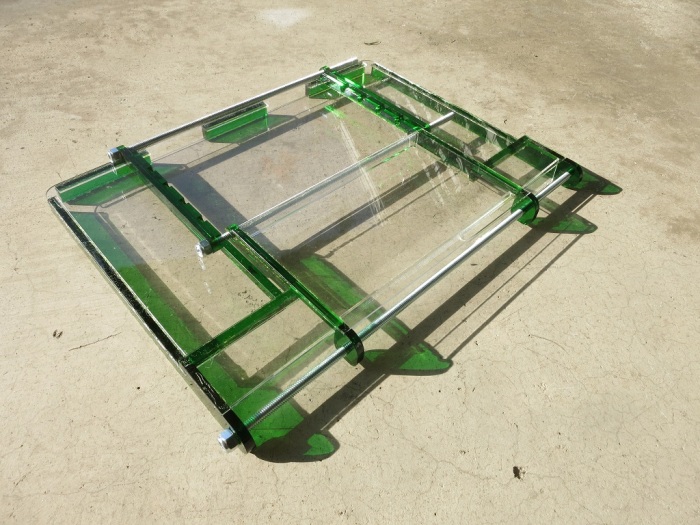
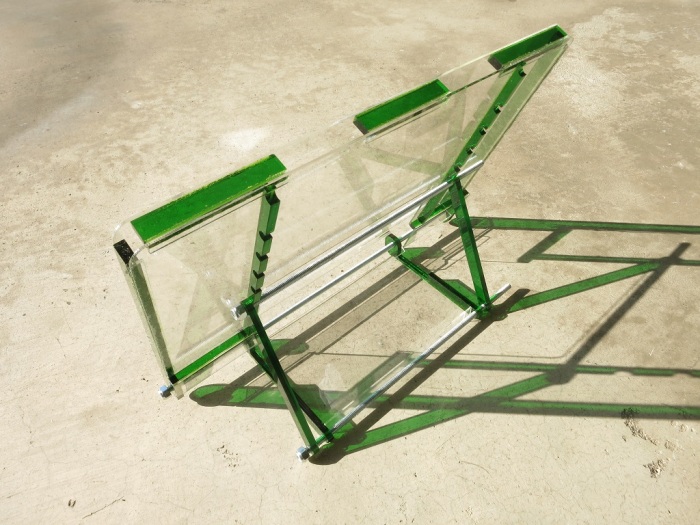
Then we install the core.
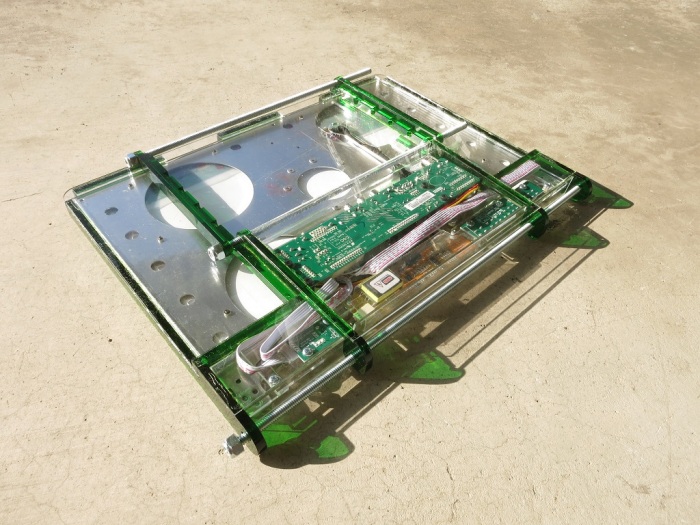

Two problems were immediately apparent.
First problem: movement along the threaded rods were not constrained. In the ideal CAD world, the parts only hinged about a single axis. In the real world, they slide all over the place because I forgot to design in anything to prevent that movement.

Second problem: The threaded rod at the top did not function as designed. Not only did it fail to clip in to the top and hold things closed as I had hoped, it also blocked access to the ports in the open position.
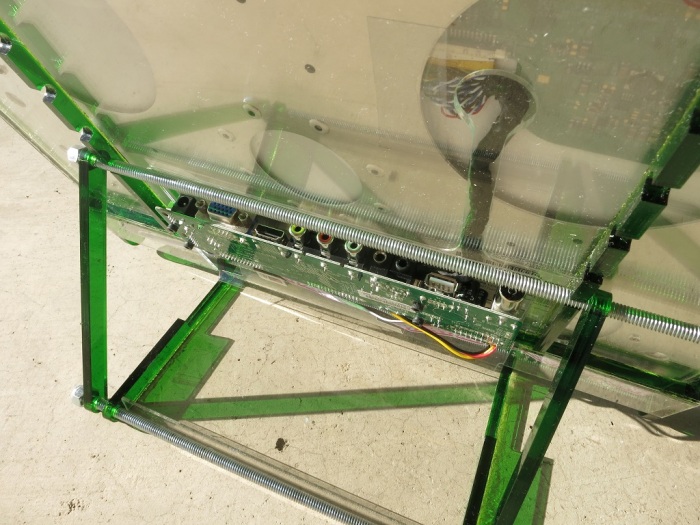
To constrain movement along the threaded rods, I added a few 3D-printed parts to the base. I also replaced the upper rods of the stand with 3D printed parts for better alignment with the adjacent rail and eliminate the need for the threaded rod that ended up blocking the port. It still doesn’t clip to the rail and hold everything closed like I hoped, but it is a big step forward in functionality.
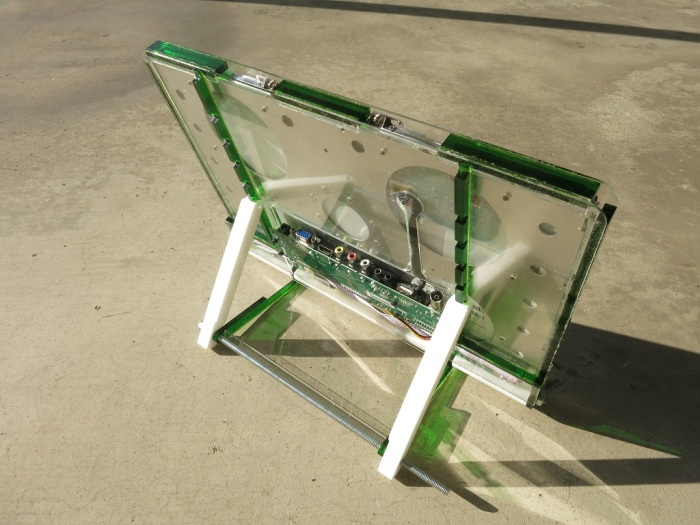
Once that is all done, the portable external monitor became far more portable. While maximum thickness stayed about the same, most of version 3 was thinner with only the main circuit board area reaching that maximum thickness. In contrast, all of version 2 were of the same maximum thickness. We shrunk along the remaining physical dimensions: the height shrunk by 1cm, and the width shrunk by a dramatic 6cm.

All of the above combined to allow PEMv3 to fit in my JanSport backpack. And carrying it will be far less of a chore now due to its significantly lighter weight. The fully equipped PEMv3 enclosure is now roughly half the weight at 4 lb. It is in fact lighter than even just the acrylic portions of PEMv2, which weighs in at 5 lb empty of electronics.
All those advances, and we have an integrate stand as well! Version 3 should be a far more usable unit than version 2 was.